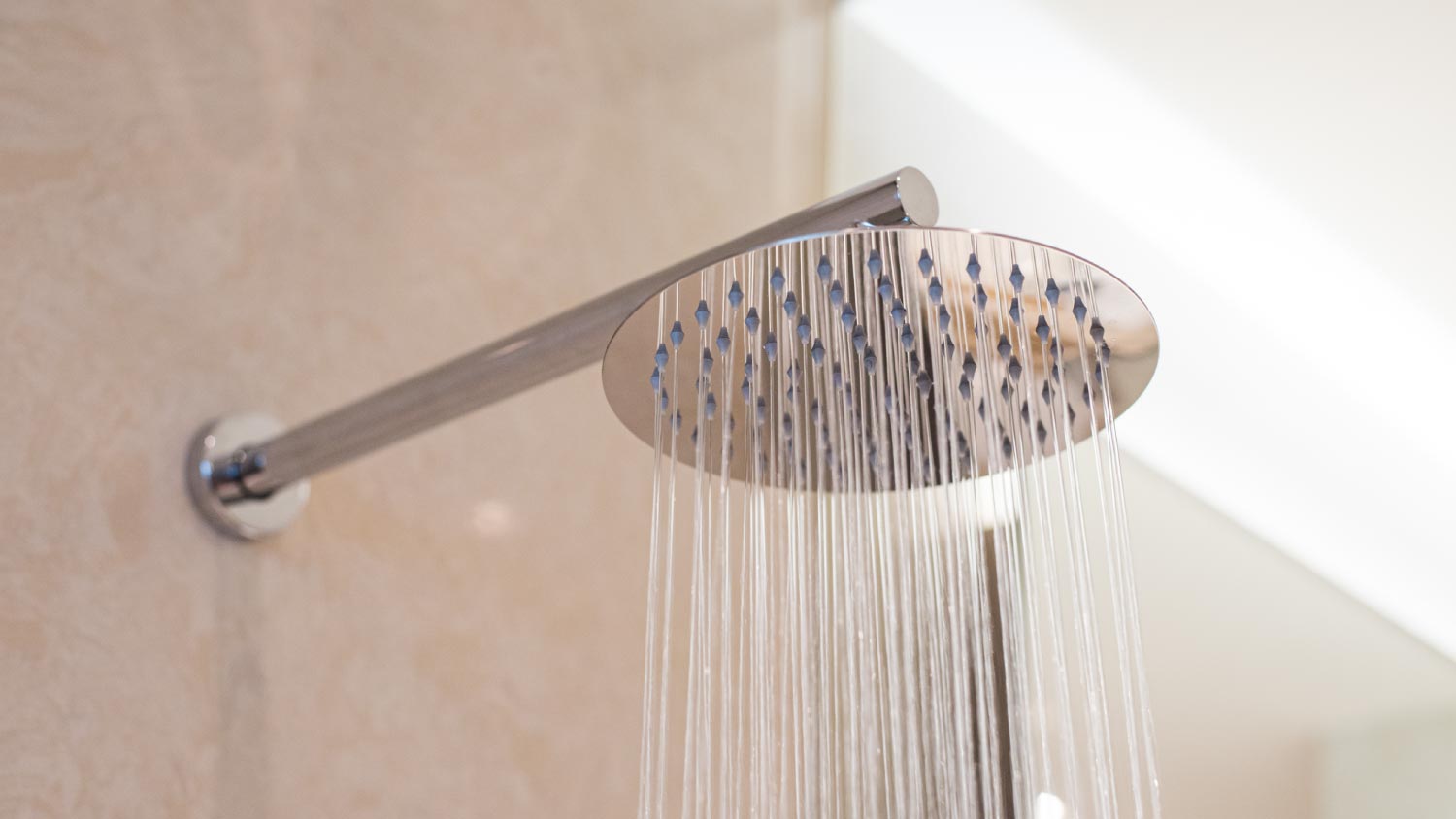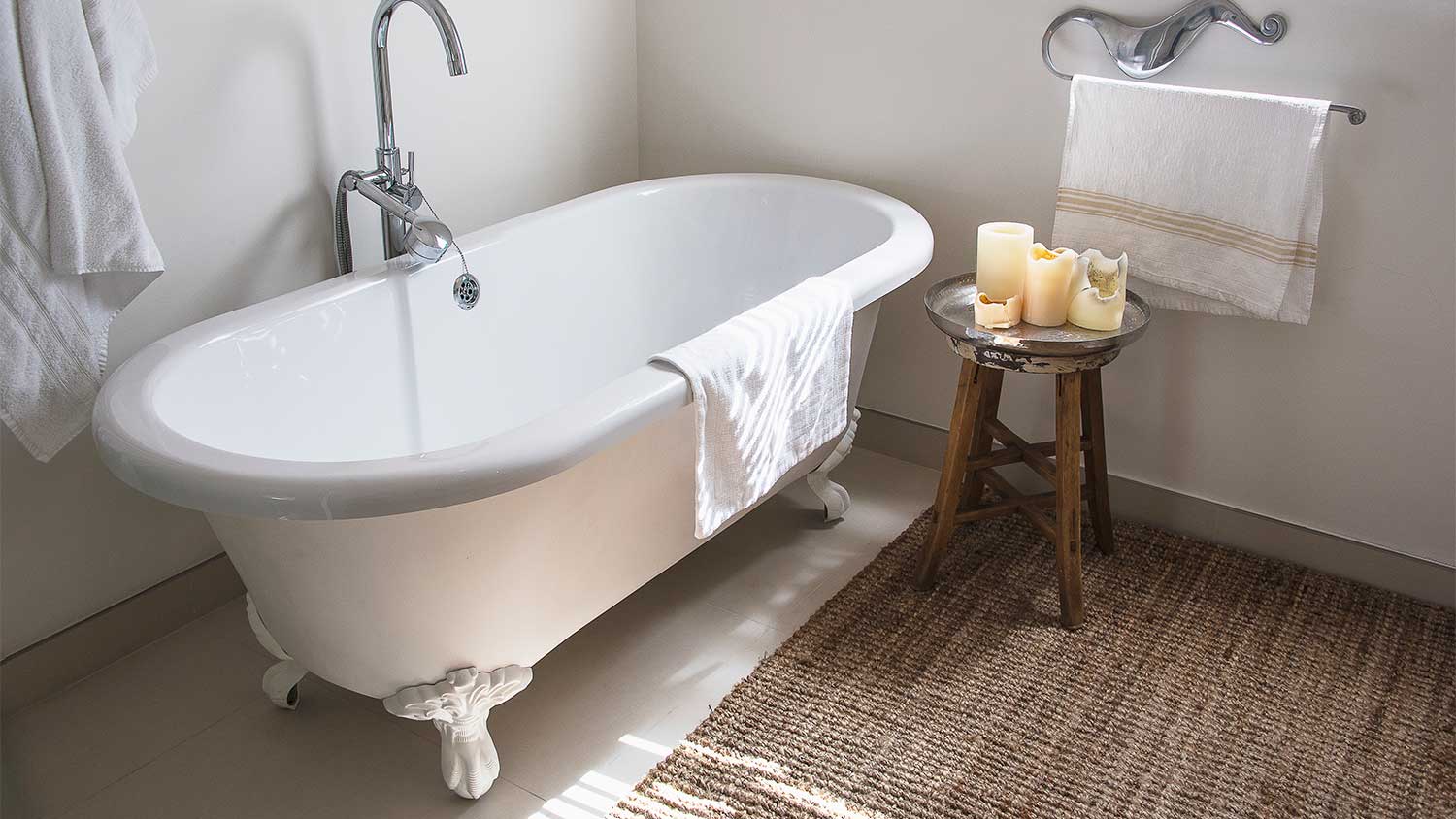
Remodeling your bathroom can add significant value to your home. Your bathroom remodel cost in Columbus, OH will depend on size, fixtures, materials, labor, and other factors.
Hop in and out of the shower—with no "hopping" required


A wet room bathroom is when the shower area is not separated from the rest of the bathroom and is level with the rest of the bathroom’s flooring.
You’ll need proper drainage and waterproofing throughout your space to make it work.
The typical range for installing a wet room is $4,000 to $15,000.
If you've ever traveled to Europe or Japan, chances are you've opened your hotel bathroom to find a wet room. What is a wet room bathroom? This design doesn’t have a break between the shower area and the rest of the room, so it has drains and waterproofing throughout to handle the extra water.
The bathroom trend is making waves here stateside, particularly for homeowners looking to transform their smaller bathrooms into more wheelchair-accessible and expansive floor plans. So, what are the pros and cons to consider before calling in the bathroom renovation team? Let's take a look.
A wet room is a bathroom with a fully open or partially open space that includes a shower, sink, toilet, and vanity. The bathing area may include a small privacy wall or glass panel, but the water doesn’t need a shower tray or curtain to stay in one place. A showerhead and set of knobs are attached to the wall in a similar style as a stall, but you don't need to worry about which way the water points.
It goes without saying that you can't simply turn any bathroom into a wet room without proper design. Bathroom design experts waterproof the entire space, from the sink to the shower, to ensure that any wandering water doesn't break through the grout. Additionally, cleverly placed drains send the shower water down into the pipes to avoid a mini-wading pool.
Wet rooms can be quite small, with a showerhead directly next to the toilet. Or, the room can be a large suite with distinct areas for a bathtub, vanity, and shower.
A wet room follows a completely open plan, with waterproof walls and flooring and a central drain that allows water to flow out without hindrance.
A shower room, on the other hand, is usually separated by one or more panels and has its own drainage system; the water stays within the shower's boundaries. Wet rooms are always floor-level and completely flat, while walk-in showers or shower rooms have a slight lip from the shower tray.

While bathroom upgrades can add value to your home, there are pros and cons to the design. So, make sure you're on board with the concept before picking out all that tile.
Here’s a look at why a wet room bathroom design could be a great choice for your home.
Without the break between your shower and the rest of the room, it's much easier to transition from one activity to the next. There are no stubbed toes, shower curtains to frequently replace, or bathtubs to scrub. Homeowners can turn a cramped, small bathroom into a more open and waterproofed wet room.
Bathroom accessibility is key for many homeowners who may have mobility challenges or are aging in place. Wet rooms are easy to maneuver and leave plenty of space for accessibility bars and seats.
Additionally, you and your guests never have to worry about a bit of water splashing outside the shower since the floor is ready to handle it.
If you’re looking to sell in the near future, the expansive and chic open floor plan design is bound to catch the eye of a new homebuyer and will likely remain timeless over the years. When done well, it adds a touch of modern sleekness that can set a home apart.
Wet room showers are designed with excellent ventilation. This helps to prevent mold and mildew growth, so long as you make sure to clean the wet room regularly. Luckily, wet room showers are easier to clean as they have fewer nooks and crannies; the whole floor can be hosed down with a cleaning solution.
Before you start picturing yourself in your chic wet room, you’ll want to make sure it’s the right choice.
Here’s a look at the downsides of turning your bathroom into a wet room:
On the one hand, yes, the tile could be quicker to clean on a regular day. The block of tile is all in one piece, so you don't have to scrub in that tricky spot where the tub meets your floor.
But on the other hand, think of all that grout. If the tile isn’t properly installed or you don’t clean it at the first sign of mildew, you could be left with a much larger job when it's time to get it under control.
The first time you use a wet room can be a bit alarming. Most homeowners are simply not used to letting water wander around the tile. While this is the point of the design, improper installation, slippery tile, or aging grout can quickly make the whole design go south.
Counteract this by working with bathroom remodelers in your area to choose a non-slip tile. Proper design should also keep the water from spreading beneath your sink and toilet so you don't have to worry about wet feet. Lastly, you may want to increase the ventilation in your bathroom to avoid mildew.
Adding a tub to a wet room doesn't offer as much flexibility since it technically goes against the design. However, if you have a large bathroom with extra space for a freestanding or mounted bathtub, it could work well. Just keep the extra cost of bathtub replacement in mind when calculating your renovation costs.
Wet rooms are very useful if someone in your home has mobility issues. The absence of any kind of barrier to step over, such as a bath edge, makes it much easier to get in and out of the shower; besides it being less of a strain on one’s body, it reduces the risk of slipping, as there are no steps or curbs to navigate around and the floor is level all around.
To create a fully accessible wet room, you will need to install grab bars and seats in the shower area; it’s best to check the official guidelines for designing an ADA-compliant bathroom.
Having an ADA-compliant home is useful for family members with mobility restrictions, and can also boost your home’s resale value.
Wet rooms are a surprisingly flexible design option for both small and large homes. Installing a wet room costs about $9,000 on average. The decision really comes down to your desired budget—as the extra waterproofing can cost more than a traditional setup—and your desired aesthetic. A wet room quite literally tears down the materials that separate your bathroom into different spaces.
If you're daydreaming about a modern upgrade that will elevate your home and maximize space, consider the wet room with the help of a masterful remodeler.
The typical range for installing a wet room is $4,000 to $15,000, with the average price hovering around $9,000. That said, prices can fluctuate based on factors like where you live, room size, plumbing logistics, materials, and lighting. Labor will take up a big chunk whether you’re converting an existing bathroom or completely renovating the entire space.
In addition, if you live in an area with a higher cost of living, renovations can be more expensive. Materials often cost more, and labor costs are inflated when there is a higher demand for work.
Since bathroom size also plays a major role, you can estimate a rough cost of around $225 per square foot to install a wet room bathroom. Of course, you’ll want to speak to several pros for estimates.
A wet room bathroom can often be more difficult to renovate than a standard bathroom. The room needs to be waterproof and properly designed so shower drains can safely remove water and prevent flooding. The layout of the room might also be different from a standard bathroom. For example, you don’t want your toilet paper roll to get soaked by the excess spray from the shower. And because wet rooms tend to be cold, underfloor heating is a desired add-on.
Therefore, unless you’re incredibly handy with construction and have done larger renovation projects, building a wet room is challenging for most homeowners. This is a project best left to experienced professionals.
From average costs to expert advice, get all the answers you need to get your job done.

Remodeling your bathroom can add significant value to your home. Your bathroom remodel cost in Columbus, OH will depend on size, fixtures, materials, labor, and other factors.

The cost to add a bathroom takes into account whether it’s a half or full bath, square footage, plumbing, electrical, and more. Read on for a cost breakdown.

Thinking of getting rid of that old bathtub and replacing it with a walk-in shower? This walk-in shower cost guide will help you plan your budget.

An updated bathtub can give a bathroom a whole new look. Find out how much it costs to replace a bathtub in Minneapolis, MN, including prices by type and labor costs.

Make choosing your toilet seat a cinch using this guide. Learn about different toilet seat types, shapes, materials, and features.

An updated bathtub can give a bathroom a whole new look. Find out how much it costs to replace a bathtub in Seattle, WA, including prices by type and labor costs.